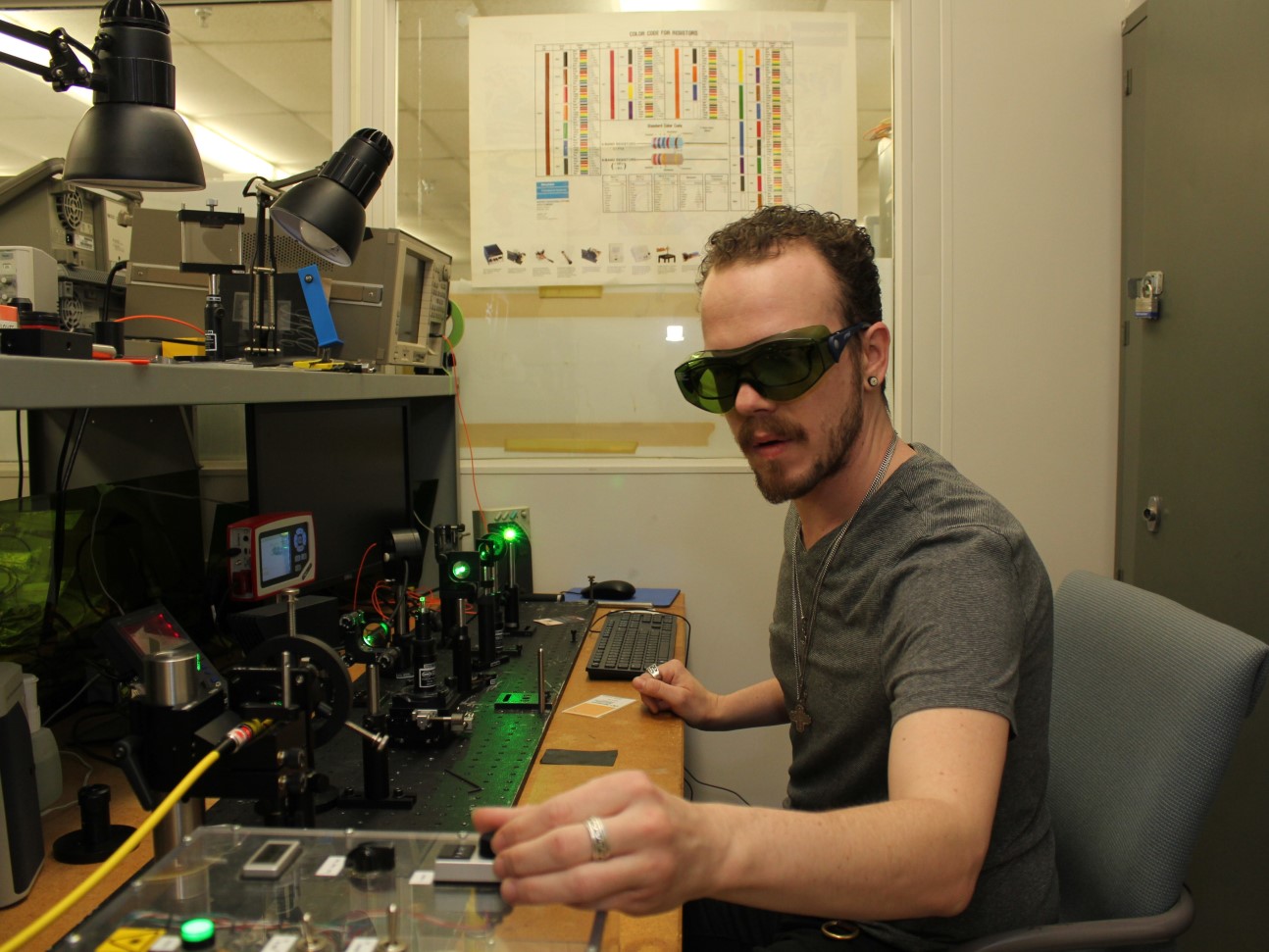/ OPCN / Springfield Technical Community College

One and two-year programs with strong interdisciplinary core curriculum provide extensive hands-on training in state-of-the-art optics and photonics labs. The one-year certificate program, which serves as the first year of the Associate Degree program, provides students with extensive theoretical and hands-on training in lasers and laser systems, fiber optics, geometric optics, electronics, SolidWorks and manufacturing essentials. The Associate degree program builds on the certificate program by providing additional advanced coursework in industrial laser applications, wave optics, advanced topics and a year-long senior capstone project. The curriculum is heavily project- and problem-based and the majority of students are afforded paid internship opportunities with local laser and optics companies.
- Align, clean, build and test complex optical systems
- Strip, cleave, clean and align multimode, singlemode, and dual-clad fiber
- Calculate and measure fiber optic power loss in decibels and power in dBm
- Determine modal dispersion, chromatic dispersion and system bandwidth
- Terminate and test fiber optic cables for connector and insertion loss
- Operate OTDRs, fusion splicers, optical spectrum analyzers, fiber inspection microscopes and fiber optic loss test sets
- Identify fiber loss mechanisms and create fiber optic power budgets
- Align, operate and characterize of LEDs, laser diodes, and photodetectors
- Operate, test and troubleshoot erbium-doped fiber amplifiers (EDFA), wavelength-division multiplexers, add/drop multiplexers, circulators, thin-film filters, and fiber-Bragg gratings
- Design, build and test electronic circuits and devices
- Use oscilloscopes, multimeters, signal generators, spectrum analyzers and laboratory power supplies
- Apply electrical and laser safety standards and practices
- Operate, test and maintain Ytterbium-doped and Erbium-doped fiber lasers
- Operate, test and maintain CO2, Argon-Krypton, and HeNe gas lasers
- Use a laser power and energy meters to measure the output power and energy of a laser
- Use a laser beam profiler to measure the spatial output characteristics of a laser
- Use an optical spectrum analyzer to measure the temporal output characteristics of a laser
- Test, maintain and troubleshoot basic laser components
- Produce linearly and circularly polarized light
- Construct and align Michelson, Twyman-Green and Mach-Zehnder Interferometer
- Use low and high power CO2 lasers for materials processing of metals, plastic and organic materials
- Use low and high power Ytterbium fiber lasers for materials processing metals
- Align and operate a Zygo interferometer for precision optical metrology
- Assemble, solder, test and troubleshoot electronic printed circuit boards
Optics and Photonics Technology
- Dr. Nicholas Massa
- (413) 755-4579
- massa@stcc.edu
- 1 Armory Square, Springfield, MA 01102
- www.stcc.edu/laser
How can I recruit from this college?
Come to our college to present your company and employment opportunities to our students. We will make available, free of charge, a private room to interview interested students. Please contact the person below to make arrangements for a recruiting visit. Graduates are available every December and May.



